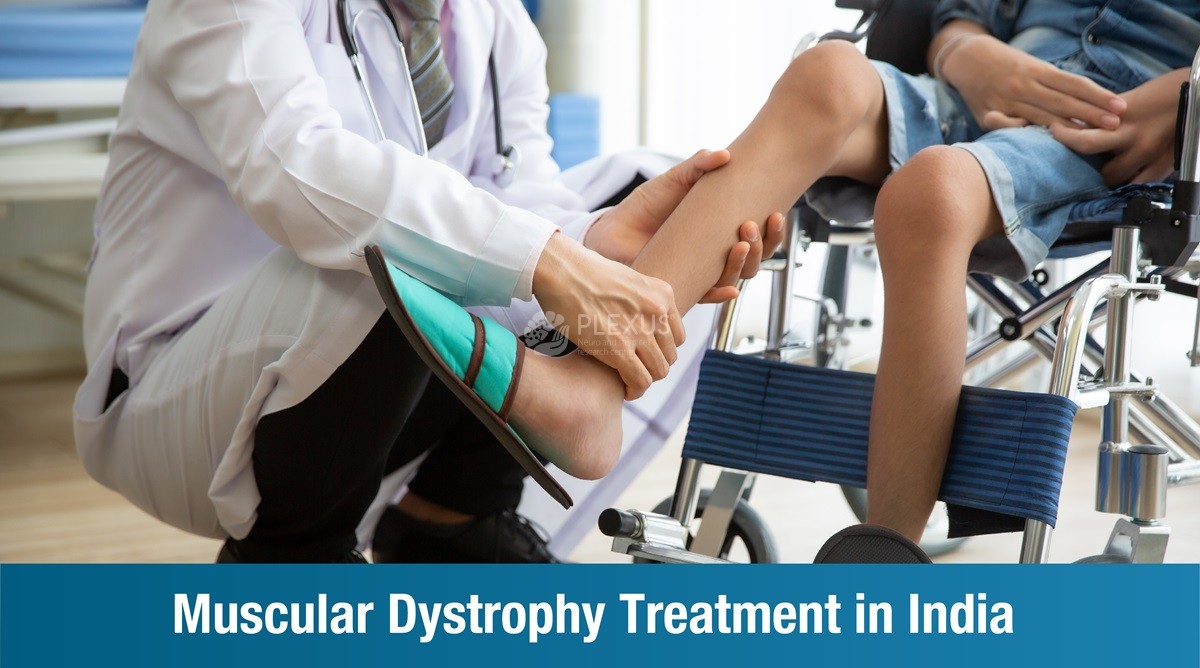
Muscular dystrophy is defined as a group of genetic disorders that lead to weakening and degeneration of skeletal muscles. It is a condition that affects millions across the world. It has been known to cause serious physical and emotional turmoil for the patients and their loved ones.
In this blog, we’ll explore the various management strategies for muscular dystrophy.
Before reading further, if you’d like to learn more about muscular dystrophy, you can click on the blogs below:
Understanding muscular dystrophy
Contrary to popular belief, muscular dystrophy is not a single disease but a group of 30+ genetic disorders. Each of these disorders is caused by a specific genetic mutation and has its own clinical characteristics. Progressive weakening and degeneration of skeletal muscles are the common symptoms among all nine types of muscular dystrophy. Additionally, as the condition advances, individuals experience respiratory challenges, mobility impairment, and difficulty performing everyday tasks.
Treatment or management strategies for muscular dystrophy
Although the quest to find a complete cure for muscular dystrophy is still known, medical science has advanced enough to respond with advanced treatments and therapies that can significantly improve the quality of life of those grappling with this condition. The treatments for muscular dystrophy may be categorised as:
Physical Therapy
- Strength Training through targeted exercises help the patient build and maintain muscle strength.
- Range of Motion Exercises are recommended by physical therapists to maintain joint flexibility, and prevent shortening of muscles and tendons (contractures).
- Assistive Devices such as wheelchairs, braces, and orthopaedic devices can encourage independence and improve mobility.
Respiratory Support
- Non-invasive ventilation or tracheostomy in the advanced stages of muscular dystrophy can improve a patient’s respiratory function.
Pharmacological Interventions
- Cardiac medications can help manage heart complications that result from muscular dystrophy.
- Corticosteroids such as prednisone may be prescribed to stall degeneration of muscle, as well as improve muscle strength.
Nutrition
- Well-balanced meals and nutritional supplements help maintain weight and reduce stress on weakening muscles.
- Overall health also improves with proper nutrition intake.
Stem Cell Therapy
- Induced pluripotent stem cells and mesenchymal stem cells can improve nerve health and function, reduce inflammation, and slow down the progression of muscular dystrophy.
Experimental and Gene Therapy
- Exon-skipping drugs such as Eteplirsen for Duchenne Muscular Dystrophy (DMD) and other experimental therapies have shown incredible promise in advanced cases. These drugs “skip over” faulty genetic sections, allowing the production of functional dystrophin, a protein lacking in individuals with DMD.
- Researchers are working with gene therapy and gene editing techniques, such as CRISPR-Cas9 to develop new management strategies to address underlying genetic mutations that cause muscular dystrophy.
*Note: Researchers are also exploring the effectiveness of combining two or more of the above therapies to address multiple (and subjective) characteristics of muscular dystrophy.
Muscular dystrophy treatment in India
From specialised hospitals and diagnostic expertise, to rehabilitation programmes, and clinical trials and research, our country offers tremendous opportunities for treating and managing muscular dystrophy.
Today, India’s first ISO-certified stem cell research center, Plexus, offers customised rehabilitation packages to manage muscular dystrophy. This includes stem cell therapy, physical therapy, occupational therapy, speech therapy, nutrition plans, and more.
Muscular dystrophy is chronic and lifelong. Having said that, it does not and should not have to limit the individual’s life and opportunities in any way. Early diagnosis and therapy can go a long way in improving the quality of life.
FAQs
Are there any treatments or cures for muscular dystrophy?
Stem cell therapy, gene therapy, and experimental therapies using exon-skipping drugs are modern management strategies for muscular dystrophy. Combined with physical therapy, occupational therapy, speech therapy, swallowing therapy, etc. the former can help manage the condition by reducing inflammation, improving nerve function and health.
Can muscular dystrophy be treated with surgery?
Soft tissue release is a type of surgical procedure that releases muscles, ligaments, and tendons from joints, thereby allowing those with muscular dystrophy move freely and more comfortably.
Is muscular dystrophy permanent?
Yes, muscular dystrophy is a permanent condition. However, with effective and timely therapy, its rate of progression can be slowed down.
Can you live a normal life with muscular dystrophy?
Muscular dystrophy in infancy can be fatal. However, in most cases, whether the condition manifests in childhood or adulthood, the individual can live normal lifespans. The quality of life is determined by the treatment they receive.
Is there any hope for muscular dystrophy?
Gene therapy and gene-editing techniques are the biggest and most hopeful bets to completely cure muscular dystrophy. However, there is still plenty of work to be done in this field.
Can you fully recover from muscular dystrophy?
With proper therapy, the progression of muscular dystrophy can be slowed. Additionally, nerve function and health can improve with stem cell therapy, gene therapy, corticosteroids, and other types of interventions. However, a full recovery from muscular dystrophy is not possible yet!










